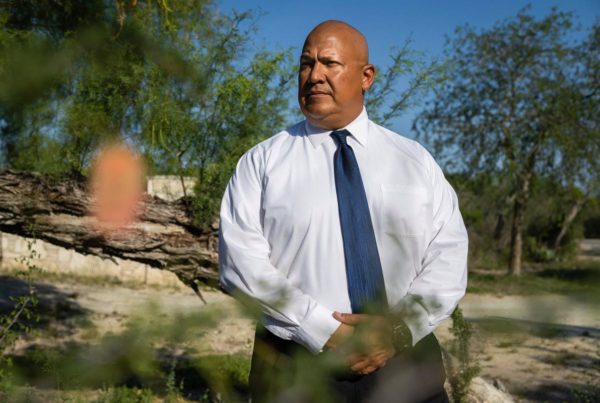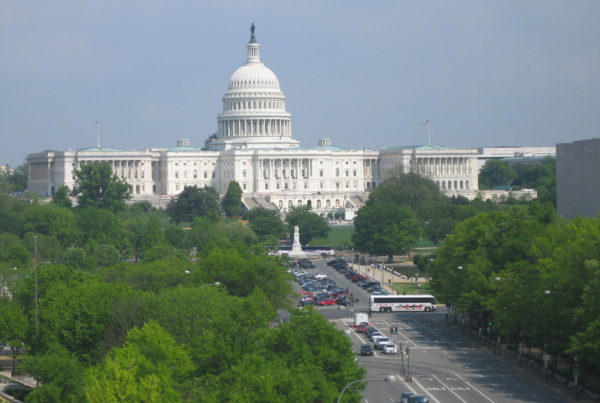For many, when it comes to the Mexican Revolution, the name Pancho Villa is a familiar one. But what about the name Ricardo Flores Magón? He was a radical who galvanized journalists, miners, migrant workers and many more to take part in the revolution.
Author Kelly Lytle Hernández tells Magón’s story and how it impacts the Mexican American population of today in her new book “Bad Mexicans: Race, Empire, and Revolution in the Borderlands.” Listen to her interview with Texas Standard above or read the transcript below.
This transcript has been edited lightly for clarity:
Texas Standard: In early November of 1910, you begin in the book with a lynching in Rock Springs, Texas. Who was Antonio Rodriguez and why start with that story?
Kelly Lytle Hernández: So, Antonio Rodriguez was a farm worker in South Texas who was targeted by a white mob and accused of murdering a white woman and also of being a member of this revolutionist group led by Ricardo Flores Magón — the Magonistas — and he was burned at the stake. And so, I start the book with this lynching to anchor us in the story that the Mexican Revolution is about social conditions in Mexico, of course, but it’s also, in some ways, a rebellion against racial violence and what’s called “Juan Crow,” or its Jim Crow derivative in the Southwest in the United States, and the treatment of Mexicans.
What about Ricardo Flores Magón and his followers referred to as the Magonistas?
So, the Magonistas were a group of journalists, but also migrant workers, and cotton pickers and miners who rebelled against the Porfirio Díaz regime, which had really sold a large portion of the Mexican land base to foreign investors and had stripped Democratic power from Mexican voters. They organized a social movement, first in Mexico, but they experienced quite severe suppression by the Diaz regime. And so, they flee to the United States to be able to rebuild their social movement in Texas and St. Louis and California (and) across the border lands, with the goal of removing Porfirio Díaz from power, but also reformulating the Mexican economy and political sphere so that ordinary Mexicans would have more power and more land.
Would you describe them as exiles who gained followers here in the United States? Is that how you might describe it?
Yeah, that’s a good way of thinking about it. They self-exiled themselves to the United States, and there were so many Mexicans just beginning to immigrate to the United States in the early 20th century because they were being displaced from their homes in Mexico by all these foreign investors. They were buying up all the land that once the Magonistas got to the United States, they found among all these migrant workers, really, an army that was prepared and willing to fight to get their land and their lives back in Mexico.
This would make officials in the United States somewhat nervous, I would think. Could you say a little bit more about why?
That’s absolutely right. So, some of the largest capitalists in the United States in the early 20th century – the Rockefellers, the Guggenheims, the Dohenys, William Randolph Hearst and others – all had major investments in Diaz’s Mexico. By 1910, foreign investors, led by U.S. investors, had come to dominate or own about a quarter of Mexican lands and dominate key industries: railroads, mining, oil and more. So, the idea that this group of rebels, the Magonistas, would remove Porfirio Díaz from power and quite possibly threaten the security of the U.S. investments in Mexico was quite concerning to the United States.
You document that the FBI and the U.S. Secret Service eventually got involved on behalf of Mexico’s president.
That’s right. So, to protect U.S. investments in Mexico, the U.S. Department of War, the U.S. Department of Justice, the immigration service [became involved]. The very beginning of the FBI at that point was called the Bureau of Investigation. The U.S. Marshals and others all participate in what I call a cross-border counterinsurgency campaign to thwart the Magonistas’ uprising before it could start a revolution. And this looks like a series of mass deportations, of extraditions, in some cases even illegal kidnappings, and arrests and imprisonments across the United States to try to undermine the social movement.
I have to say that there’s something about what’s happening there that does seem to be a war almost burbling underneath, involving class struggle and other elements. Was there something about this that you found especially surprising?
That’s right. I mean, so it’s two countries, the United States and Mexico, but it’s one integrating economy that’s operating under the sphere of the rise of U.S. empire in the early 20th century. And so, you have the Magonistas who are rebelling against Porfirio Díaz, who was propped up by the United States. And in time, they’re able to build really important relationships with U.S. labor unions and radicals, Mother Jones and many others. And so, there is an interracial, cross-border labor movement that is developing in and around the Magonistas.
Why do you think this is a story that’s not more well-known and more importantly, perhaps, isn’t more well-known among people in border states like here in Texas where a lot of these events, these stories, actually take place?
Well, what I talk about in the book is that Mexican American history in general is not well known in the United States. It’s not part of the canon of U.S. history. And this story of the Magonistas is typically tucked into the corners of Mexican American history. So, it hasn’t gotten a lot of attention, although when you look at it, you have the origins of the FBI, you have the rise of U.S. empire, you have core stories in racial inequity and white supremacy in the United States. And so, what I’m hoping with this book is that people get a taste of the power, the significance, the importance and centrality of Mexican American history and will go on to read more.
Where do you see that jumping off point ultimately taking people? Especially now, as so many of the issues that come up here obviously have their counterpart in contemporary current events, too.
Well, let’s talk about the title of the book, which is a provocative title. Obviously, I am signaling the use of rhetoric by former President Trump of “bad hombres” in reference to Mexican migrants. But I’m also signaling a history here in which Mexicans in the United States were perceived, or it was hoped, that they would be docile, and quiet, and servile and temporary laborers. And those were the so-called good Mexicans in the early 20th century. But the ‘bad Mexicans’ were the people who were not compliant, who were rebellious, who challenged those social systems.
Porfirio Díaz called the Magonistas “bad Mexicans,” or “malos Mexicanos,” for challenging his rule. But the United States, really powerful people, also derided the Magonistas and other Chicano and Mexicano organizers as being “bad Mexicans” for challenging, really, the rules of white supremacy. So, I hope that in some ways this book helps to excavate that history of this kind of language, that when someone says people are being “bad hombres” or “bad Mexicans,” they’re really the ones who are challenging the social regimes of iniquity.















